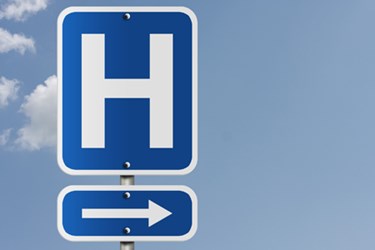2016's Best Hospitals Named

By Christine Kern, contributing writer

Release included a digital infographic underscoring the importance of researching providers.
Healthgrades has announced its lists of America’s 50 and 100 Best Hospitals for 2016. The announcement also included the publication of a digital infographic, Hospital Choice: Your life may depend on it, underscoring the importance of researching healthcare providers. The infographic “reinforces the importance of knowing the top hospitals locally before an urgent medical issue arises,” according to Healthgrades.
“We are pleased to recognize those organizations that have achieved this distinction and urge all consumers to do their homework when selecting a hospital — especially as it relates to emergent conditions — since hospitals do not perform equally,” said Evan Marks, Chief Strategy Officer, Healthgrades.
Among the top 50 hospitals are Cedars-Sinai Medical Center in California, Baystate Medical Center in Massachusetts, Maryland’s Medstar Harbor and Good Samaritan Hospitals, and the Heartland Regional Medical Center in Missouri.
To rank in the top 50, hospitals must have earned the Healthgrades Distinguished Hospital Award for Excellence for six years in a row, placing them in the top 1 percent of hospitals nationwide. The top 100 hospitals rank in the top 2 percent in the nation for consistent clinical excellence and have been awarded the Distinguished Hospital Award for at least the last three years.
“The Distinguished Hospital Award for Clinical Excellence recipients clearly place a premium on producing great clinical outcomes and stand out from their peers in their overall clinical performance. We commend these hospitals for their well-deserved achievements,” explained Evans in a January statement.
Among the 100 Best Hospitals group, the proportion with five-star ratings far exceeded that at other hospitals in a number of critical care areas:
- 63 percent versus 12 percent for treatment of heart attack
- 60 percent versus 13 percent for treatment of stroke
- 80 percent versus 14 percent for pneumonia care
- 46 percent versus 6 percent for treatment of chronic obstructive pulmonary disease
- 94 percent versus 21 percent for sepsis response
In all, hospitals that made the lists spanned 28 states. The results were based on 2012-2014 outcomes data from hospitals in all 50 states and the District of Columbia.
